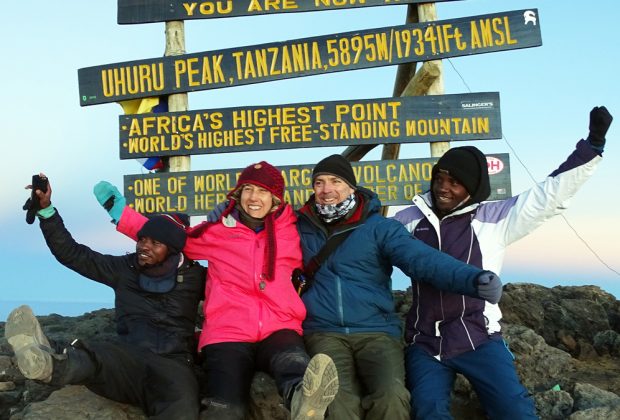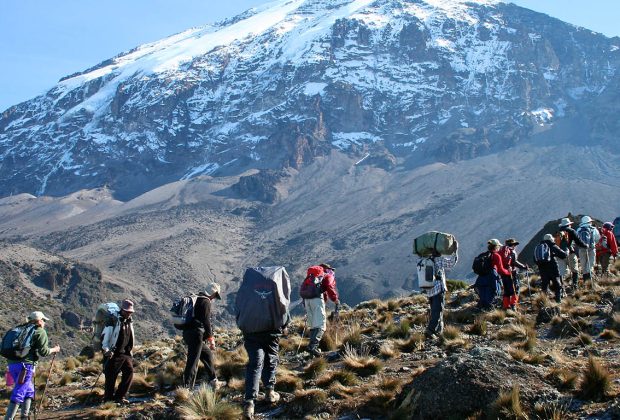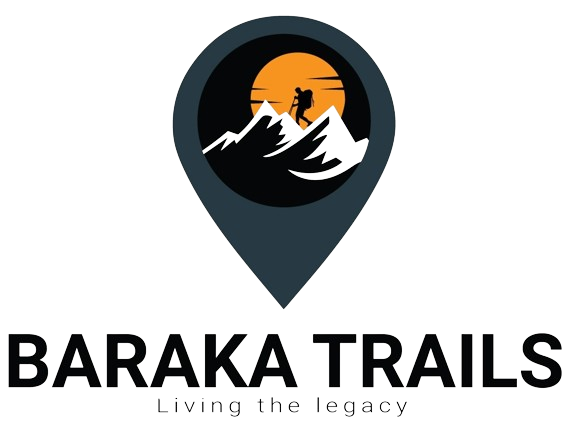Kilimanjaro Menu



Diet for Kilimanjaro Altitude
When preparing for a high-altitude trek like Kilimanjaro, proper nutrition is crucial for acclimatization and energy.
Supplying your body with continuous calories is an important factor in successfully climbing Kilimanjaro. While an average person on a typical work day burns around 2,500 calories, a hiker on Kilimanjaro can burn 6,000 to 8,000 calories a day! In order to keep well fueled, you have to eat.
Meals on Mount Kilimanjaro
Our mountain chefs are brilliant at what they do. The taste and variety of the menu items is very impressive. We regularly receive glowing feedback from our clients that they were pleasantly surprised at how good the food was and how it really helped them in their quest for the summit.
Note that we can accommodate vegetarian and vegan diets.
Carbohydrate Requirements
It is well known that eating a high carb diet is best for boosting endurance. In general, carbohydrates replace depleted muscle glycogen, prevent muscle deterioration, and require less oxygen for metabolism. At high elevations, this effect is even more pronounced.
When exposed to altitude, there is a shift in the body’s energy source from fat to carbohydrates. Carbs requires 8-10% less oxygen for metabolism than protein or fats. Researchers have found that people naturally increase their carbohydrate consumption when at high elevations, presumably as a response to the low oxygen in the environment.
Protein and fat are not well tolerated at altitude. Because absorption of protein and fat drops substantially, you should reduce your intake accordingly.
Carbohydrates are the preferred energy source and should make up the largest percentage of food at high altitude. It is recommended that 60% or more of your calorie intake should come from carbohydrates at high altitude. Therefore, our menu is predominantly made of high carb meals designed to sustain your body’s performance on the mountain.
Not only are carbs the best source of energy for climbing, carbs are also needed for altitude acclimatization. A high carb diet has been shown to prevent symptoms of acute mountain sickness (AMS). Researchers have found that a high carbohydrate intake can reduce the effects of altitude by 1,000 feet at a height of 13,000 feet and 2,000 feet at a height of 17,000 feet.
Tips for Eating at Altitude
At higher altitudes, people struggle with appetite loss and nausea. Try your best to keep eating regardless. You want to avoid going into a calorie deficit on the mountain because it will make acclimatization, recovery and athletic performance more difficult. It is better to eat the “wrong” food than no food at all. So eat whatever you can, whenever you can. Protein, fat and carbohydrates are all sources of calories.
We do recommend that you bring some snacks to supplement your diet on the mountain. Snacks add some variety to the food you eat, are another source of calories, and can provide a little morale boost when times are tough.
Here are some best practices for eating and drinking on Kilimanjaro.
- Wash your hands before every meal.
- Don’t skip meals. Eat even if you are not hungry.
- Eat a high carbohydrate diet (which we will provide).
- Bring snacks from home that you love to eat.
- Drink at least four liters of water per day.
- Take electrolytes.
- Avoid consuming alcohol, tobacco or depressant drugs including barbiturates, tranquilizers, sleeping pills and opiates.
- Avoid excessive caffeine consumption.
KILIMANJARO SAMPLE MENU
Morning Call
- Tea, Drinking chocolate, Milo, Coffee, Milk
Breakfast
- Porridge – Oath porridge, Finger millet porridge, Maize porridge, Semolina (sooj) porridge
- Fruits – Sorted fruits plate, Fruits platter, Selected Fruits
- Toasted Bread, French toasted
- Omelets – Onion omelet, Plain omelet, Spanish omelet, Scottish eggs (over easy)
- Fried sausages, Fried bacon, Grilled sausage
- Cheddar cheese
- Tanzania tea, Drinking chocolate, Coffee, Decaffeinate, Milk (Nido)
- Pan cakes · Sauté potatoes
- Fried mushroom
Lunch Box
- Juice packet
- Biscuits
- Piece of fruits
- Chocolate
- Portions cheese
- Queen cakes
- Bread sandwich
- Sweetness(pipi)
Lunch
- Soups
- Creamed of herbal parcel
- Creamed of mixed vegetables
- Creamed Zucchini
- Clear of onions served with cheese crouton
- Creamed of celery & carrot
- Clear whole chicken garnish with sweet corn & basil herbal
Salads
- Green lettuce, avocados, ring of onions dressed with vinaigrette
- Coleslaw, cabbage, onions, carrot
- Cabbage, onions coated with cream
- Carrot & onions dressed with lemon & olive oil
- Pancakes
- Vegetables and Toasted cheese
- Pan-fried of rings of Irish potatoes
- Sweet potatoes
- Cucumber, tomatoes & spring onion led with herbal olive oil
- Hard boiled eggs, stuffed with egg yolk and tomato ketchup
- Beef piece & veg piece
- Sweet breads
- Hard biscuits, Pringles, Potatoes crisp
- Cucumber, tomatoes & onions cream with mayonnaise
- Hard chocolate
Main Course
- Deep fried chicken
- Deep fried of fish finger- served with tartar source
- Pan Fried – Chicken served with Moroccan spaghetti
- Fish gouyon (fish butter) garnished with lemon slice saved with French fried
- Grilled chicken
Dessert
- Fruit slice, Fruit platter, Fruit Salad
- Veg fuss ills
- Tea, Coffee, Drinking chocolate, Milo, Milk (Nido)
Dinner
Soups
- Cream of cucumber and potatoes
- Cream of celery soup
- Cream of leeks
- Green paper and port soup
- Creamed of zucchini and potatoes
- Creamed of ginger soup
- Creamed of garlic soup
- Vegetable soup
Main Course
- Grilled beef served with Gravy sauce garnished with grilled tomatoes
- Beef stroganoff
- Fried chicken
- Spiced meat ball with creamed pomodoro sauce
- Mincemeat wit bolognaise source
- Chicken chaseau
- Grilled Beef fillet-Saved with Creamed mint sauce
- Chicken fricassee, with coul, tomato sauce
Accompaniment
- Lyonnais potatoes
- Vegetable rice
- French fries
- Macaroni with cheese
- Spaghetti pomodoro
- Turmeric rice
- Vegetables Rice
- Deep fried potatoes
Vegetarian
- Fresh beans and carrot with coconut sauce
- Cauliflower and carrot
- Coleslaw
- Seasonal green beans with cream sauce
- Braised cabbage
- Mixed vegetables
- African pride-led finger, (ngogwe or better tomatoes)
- Creamed of cauliflower & carrot
Dessert
- Banana fritters
- Queen cake glassed with chocolate source
- Grape suzettes and pancake
- Creamed Caramel
- Custard pudding
- Bread and buttered pudding
- Cake
- Fruit salad
- Fresh fruits Tea, Coffee, Drinking chocolate, Milo, Milk
